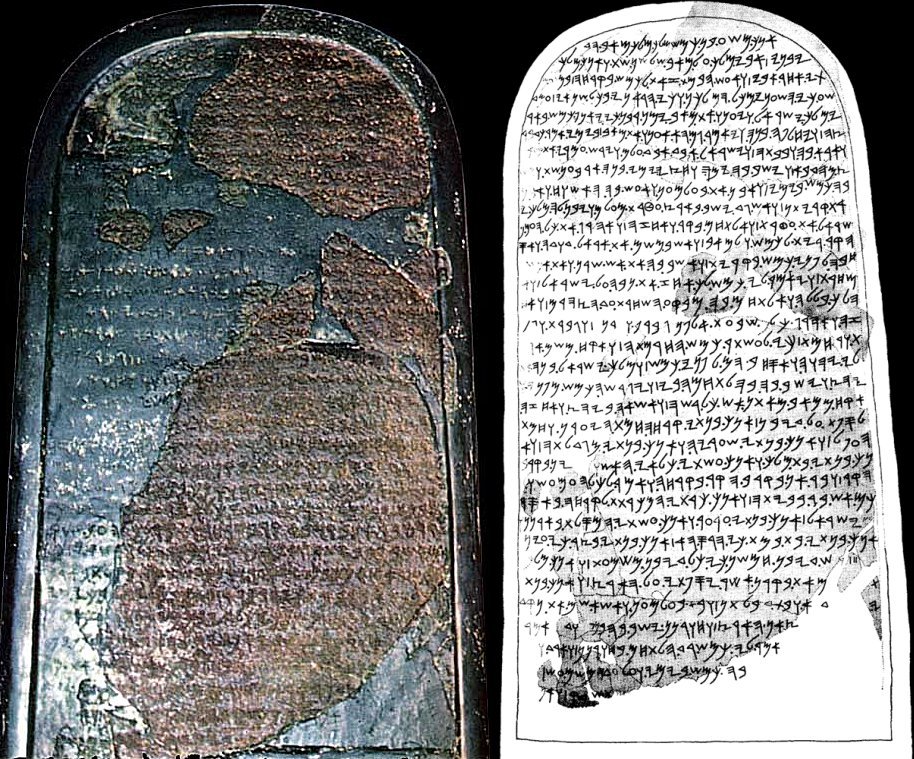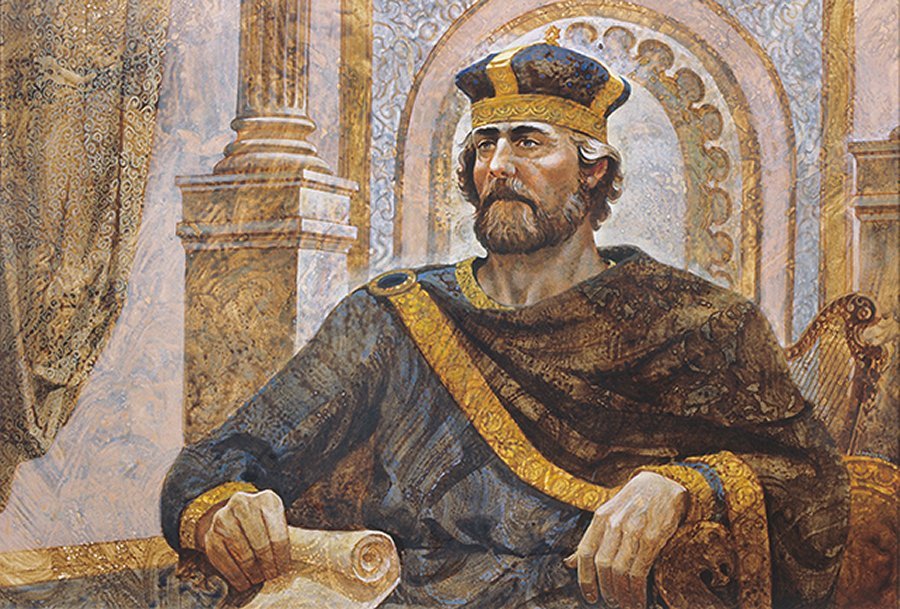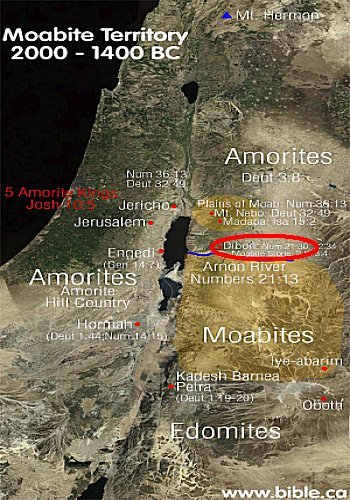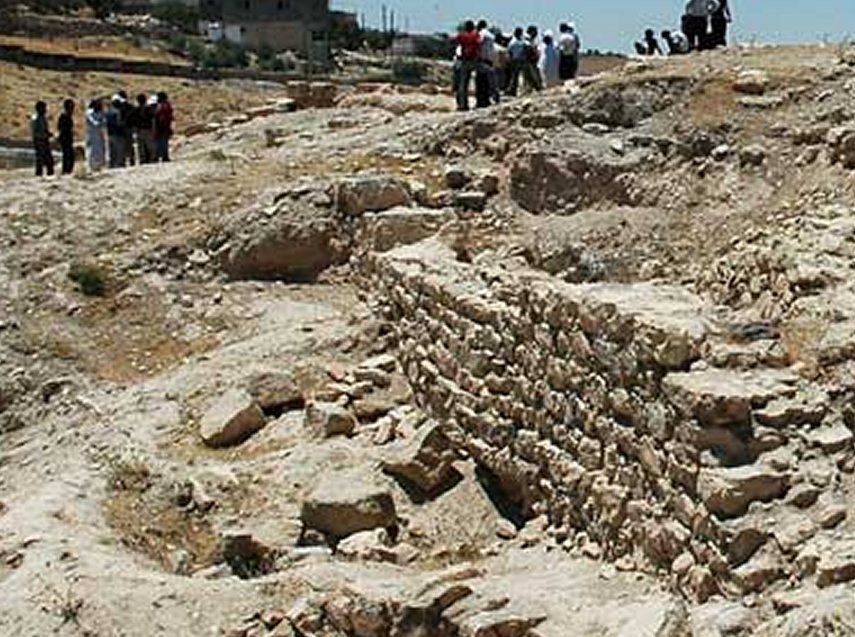Mesha Stele: One Of The Most Valuable Biblical Artifacts
A. Sutherland - AncientPages.com - Mesha Stele, which is also known as the Moabite Stone, is one of the most valuable Biblical artifacts.
It was accidentally discovered among the ruins of Dhiban (Biblical "Dibon," capital of Moab), 20 miles east of the Dead Sea, by a German missionary F. A. Klein in 1868.
The artifact was discovered in 1868 about 20 miles east of the Dead Sea. What is most amazing is that it mentions "Israel," "Yahweh" and the "House of David." Image: Bible History
The artifact was a bluish basalt stone, about 4 feet high (about 142cm) and 2 feet wide, and 14 inches thick. It was erected and inscribed by Moabite King Mesha.
When it was found the Berlin Museum quickly negotiated for it while the French Consulate at Jerusalem offered more money.
Considered a valuable and spectacular find, the stele became an object of great interest of the Berlin Museum and the French Consulate at Jerusalem. The local Bedouin tribe was in possession of the artifact, but fearing the loss of it, decided to destroy it. They hang it on a rope and repeatedly dipped it in fire and water until it fell apart.
Most of the inscriptions, over thirty verses, were later reconstructed from the recovered fragments and assembled by Charles Clermont Ganneau, a renowned French Orientalist and archaeologist.
King David Enthroned, by Jerry Harston
The inscription has 34 lines, and it is the most extensive inscription ever recovered that refers to ancient Israel. It was written in Paleo-Hebrew alphabet (a variant of the Phoenician alphabet).
Not much is known about King Mesha, one source is the Hebrew Bible and the other is the Mesha Stele saying:
"I am Mesha, son of Chemosh[-yatti], the king of Moab, the Dibonite. My father (had) reigned over Moab for thirty years, and I reigned after my father. And I made this high place for Chemosh in Qarcho … because he has delivered me from all kings, and because he has made me triumph over all my enemies…." and another source is the Hebrew Bible:
"Now Mesha king of Moab was a sheep breeder, and he regularly paid the king of Israel one hundred thousand lambs and the wool of one hundred thousand rams. But it happened, when Ahab died, that the king of Moab rebelled against the king of Israel." (2 Kings 3:4-27).
The king's name: "Mesha" is based on the Hebrew word "to save", but it has also been suggested that his name may be related to the Hebrew "Moshe" (Moses). While his personality is rather obscure, he left a clear message on to the stone, which gives us a glimpse of historical events, which were important for the Moabite Kingdom.
The text is a reminder of Mesha's heroic struggles with King of Israel, Omri and his son Ahab and how he got freed from the influence of Israel after many years of captivity. As we remember, the Bible gives the Messiah a similar story (2 Kings 3) but it is not clear, however, whether it describes the same battle as the Mesha Stele does.
The inscription also tells that king ordered repairs of the walls, built a palace and water tanks. It was extremely important because of the drought in Moab, (now west-central Jordan), which in Biblical times was the kingdom of the Moabites (14th century BC to 582 BC), who were closely related to the Israelites but frequently in conflict with them.
Dibon excavations. Image credit: Bible Places.com
Word: "Israel" is mentioned several times and so is "Yahweh" in verse 18:
"…And from there I took the vessels of Yahweh, and I presented them before the face of Chemosh..."
It appears that king Mesha knew about the Israelite God Yahweh and says he took "the vessels of Yahweh and presented them before the face of Chemosh", the god of the Moabites, according to the Hebrew Bible.
It is the first appearance of the name of the God of Israel in the Moabite language and Phoenician alphabet.
Moreover, line 31 is very significant because it bears the phrase the "House of David".
The existence of King David has been long questioned by scholars. When French scholar Andre Lemaire (who spent seven years studying it) was investigating the inscription, he determined that the same phrase appeared there in line 31. Lemaire was able to identify a previously faint letter as a "d" in the phrase "House of David." This phrase was used commonly in the Old Testament for the Davidic Dynasty, also referred to as the "House of David".
Much more have to be discovered to confirm the existence of the great King David, the founder of the ruling dynasty of Judah, the "House of David". So far he is mentioned in the Mesha Stele and on the pages of the Bible.
Other artifacts would confirm the existence of this historical figure of Biblical times.
The Mesha Stele is now stored in the Louvre of Paris and its copy is in the British Museum in London.
Written by – A. Sutherland - AncientPages.com Senior Staff Writer
Copyright © AncientPages.com All rights reserved. This material may not be published, broadcast, rewritten or redistributed in whole or part without the express written permission of AncientPages.com
Expand for referencesMore From Ancient Pages
-
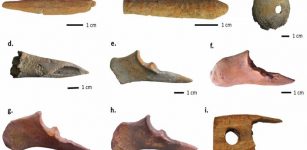 More Sophisticated Manufacturing In The Bronze Age – New Evidence
Archaeology | Jun 27, 2020
More Sophisticated Manufacturing In The Bronze Age – New Evidence
Archaeology | Jun 27, 2020 -
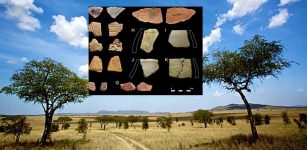 Evidence For Milk, Meat, And Plants In Prehistoric Kenya And Tanzania
Archaeology | Apr 15, 2020
Evidence For Milk, Meat, And Plants In Prehistoric Kenya And Tanzania
Archaeology | Apr 15, 2020 -
 Eclipse Was A Bad Omen, A Sign Of Gloom And Doom In Ancient Peoples’ Beliefs
Featured Stories | Sep 25, 2015
Eclipse Was A Bad Omen, A Sign Of Gloom And Doom In Ancient Peoples’ Beliefs
Featured Stories | Sep 25, 2015 -
 The Parthenon Marbles Evoke Particularly Fierce Repatriation Debates – An Archaeologist Explains Why
Artifacts | Jul 1, 2024
The Parthenon Marbles Evoke Particularly Fierce Repatriation Debates – An Archaeologist Explains Why
Artifacts | Jul 1, 2024 -
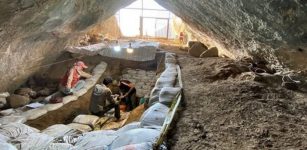 Humans Lived In The Qal-e Kord Caves 400,000 Years Ago – Oldest Settlement In Iran Found?
Archaeology | Aug 24, 2022
Humans Lived In The Qal-e Kord Caves 400,000 Years Ago – Oldest Settlement In Iran Found?
Archaeology | Aug 24, 2022 -
 Underwater Secrets Of Lake Lednica And The Unique Wooden Face
Underwater Discoveries | Jul 21, 2025
Underwater Secrets Of Lake Lednica And The Unique Wooden Face
Underwater Discoveries | Jul 21, 2025 -
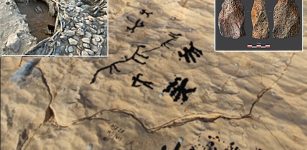 Unique Finds Discovered In Oman – Rub’al-Chali Desert Reveals Its Secrets
Archaeology | Apr 20, 2023
Unique Finds Discovered In Oman – Rub’al-Chali Desert Reveals Its Secrets
Archaeology | Apr 20, 2023 -
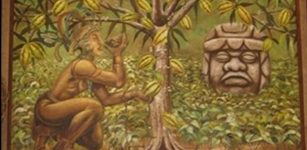 Among Ancient Maya Cacao Was Used In Celebrations And Was Common To All People
Archaeology | Sep 27, 2022
Among Ancient Maya Cacao Was Used In Celebrations And Was Common To All People
Archaeology | Sep 27, 2022 -
 New Treasures Found On The Legendary Shipwreck San José Near Colombia
Archaeology | Aug 9, 2024
New Treasures Found On The Legendary Shipwreck San José Near Colombia
Archaeology | Aug 9, 2024 -
 On This Day In History: Edict Of Milan Is Signed – Persecution Of Christians Ends – June 13, 313 AD
News | Jun 13, 2016
On This Day In History: Edict Of Milan Is Signed – Persecution Of Christians Ends – June 13, 313 AD
News | Jun 13, 2016 -
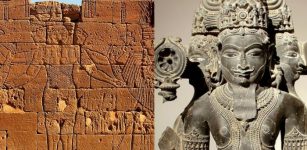 Apedemak: Did The Three-Headed Lion War God Of Kush Originate From Ancient India?
Featured Stories | Jul 21, 2021
Apedemak: Did The Three-Headed Lion War God Of Kush Originate From Ancient India?
Featured Stories | Jul 21, 2021 -
 Forgotten And Overgrown Step Pyramid Of Koh Ker – Ancient Memory Of The Khmer Empire
Featured Stories | Apr 19, 2017
Forgotten And Overgrown Step Pyramid Of Koh Ker – Ancient Memory Of The Khmer Empire
Featured Stories | Apr 19, 2017 -
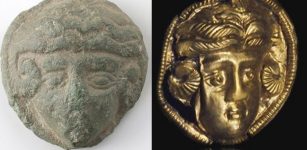 Unique Ancient Bronze Miniature Portraits Of Alexander The Great Found In Ringsted On The Island Of Zealand
Archaeology | Apr 11, 2024
Unique Ancient Bronze Miniature Portraits Of Alexander The Great Found In Ringsted On The Island Of Zealand
Archaeology | Apr 11, 2024 -
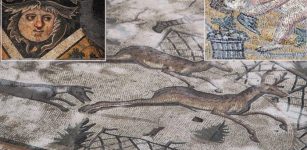 Beautiful Mosaics In Ancient City Of Germanicia
Archaeology | Sep 17, 2020
Beautiful Mosaics In Ancient City Of Germanicia
Archaeology | Sep 17, 2020 -
 On This Day In History: Krakatoa – Most Dangerous Volcano Erupted- On August 26, 1883
News | Aug 26, 2016
On This Day In History: Krakatoa – Most Dangerous Volcano Erupted- On August 26, 1883
News | Aug 26, 2016 -
 The Great Pyramid And Ancient Egyptian Knowledge Shed Light On Biblical Mysteries – Resurrection Of The Flesh – Part 1
Ancient Mysteries | Nov 25, 2019
The Great Pyramid And Ancient Egyptian Knowledge Shed Light On Biblical Mysteries – Resurrection Of The Flesh – Part 1
Ancient Mysteries | Nov 25, 2019 -
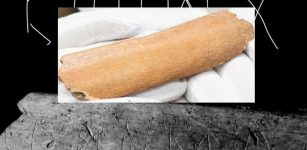 Oldest Writing System Among Slavs To Be Germanic Runes – New Study
News | Feb 15, 2021
Oldest Writing System Among Slavs To Be Germanic Runes – New Study
News | Feb 15, 2021 -
 The Opening Of Pandora’s Box May Have Been A Real Event
Myths & Legends | Jun 22, 2021
The Opening Of Pandora’s Box May Have Been A Real Event
Myths & Legends | Jun 22, 2021 -
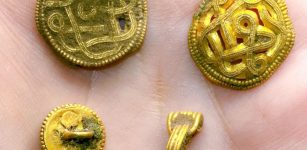 Spectacular Ancient Gold Treasure Found In Denmark – Was It A Gift To Please Angry Gods?
Archaeology | Sep 24, 2018
Spectacular Ancient Gold Treasure Found In Denmark – Was It A Gift To Please Angry Gods?
Archaeology | Sep 24, 2018 -
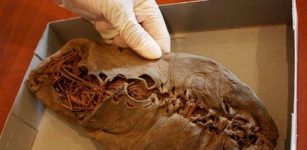 World’s Oldest Shoe Is 5,000-Year-Old
Archaeology | Jul 10, 2015
World’s Oldest Shoe Is 5,000-Year-Old
Archaeology | Jul 10, 2015

